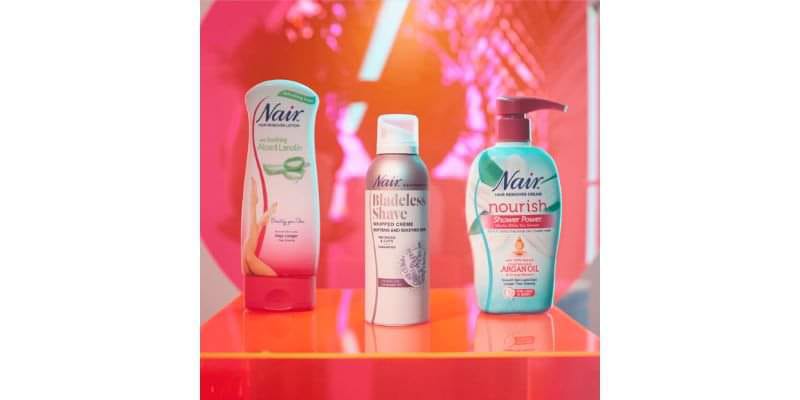Does Nair Really Cause Cancer? Exploring the Truth

In the world of beauty and personal care, Nair has emerged as a household name, synonymous with quick and effective hair removal solutions. This cream, known for its ability to remove hair without the need for shaving, has been a go-to choice for many seeking smoother skin. However, amidst its popularity, Nair has found itself at the center of a concerning debate: the possibility of it being a cancer-causing agent.
Let’s explore.
What is Nair?
Nair is a brand of chemical hair removal products that has been in the market for several decades. Unlike traditional shaving, Nair products remove hair by breaking down the protein structure (keratin) in the hair follicle, allowing for easy wiping away of hair from the skin’s surface. The primary active ingredients in Nair are calcium thioglycolate and sodium hydroxide, which together weaken the hair, making it simple to remove without the need for razors or waxing.
Brief History of the Product and its Popularity
The journey of Nair as a brand is a testament to its effectiveness and consumer trust. First introduced to the market in the early 1970s, Nair was among the pioneers in offering an alternative to the traditional methods of hair removal. Over the years, it has evolved, improving its formula and expanding its range to include products specific for sensitive skin, shower-friendly versions, and even fragranced options to enhance user experience.
Nair’s rise in popularity can be attributed to its successful marketing campaigns and the growing demand for convenient at-home hair removal options.
Overview of Common Chemicals in Nair That Have Raised Concerns
Nair, like many cosmetic products, contains a variety of chemicals that work to break down the protein structure of hair, allowing for easy removal. Some of the key ingredients that have garnered attention include:
- Calcium Hydroxide: Used for its alkaline properties, aiding in hair removal. Concerns revolve around its potential skin irritant properties.
- Thioglycolic Acid: Essential for breaking down hair proteins. There have been discussions about its safety and potential as a carcinogen.
- Fragrances and Preservatives: Some fragrances and preservatives used in cosmetic products have been linked to health concerns, including potential carcinogenic effects.
It’s important to note that the presence of these chemicals does not automatically imply a cancer risk. The concentration and manner of use play a crucial role in determining safety.
Scientific Perspective
To demystify the claims about Nair causing cancer, several scientific studies have been conducted. These studies focus on the long-term effects of the chemicals found in Nair and their interaction with human skin and cells.
- Epidemiological Studies: Research observing groups of individuals over time to determine if there is a higher incidence of cancer among Nair users.
- Laboratory Studies: Experiments conducted in lab settings to observe the direct effects of Nair’s ingredients on cell cultures or animal models.
- Review Studies: Comprehensive analyses of existing scientific literature to draw conclusions based on a wider array of data.
The results of these studies have been mixed, with some showing negligible risk and others indicating potential concerns under specific circumstances.
Expert Opinions from Dermatologists or Oncologists
Dermatologists and oncologists have weighed in on the debate, offering expert perspectives based on clinical experience and scientific understanding. Many emphasize the importance of considering the concentration of chemicals and the frequency of use. They also highlight that individual risk can vary based on factors like skin type, genetic predispositions, and overall exposure to carcinogens.
Comparing Ingredients: Nair vs. Other Hair Removal Products
Analysis of Nair’s Ingredients Compared to Other Similar Products
The landscape of hair removal products is diverse, with each brand offering its own formula. A close comparison of Nair’s ingredients with those of other products reveals both similarities and differences. For instance, while Nair uses calcium hydroxide and thioglycolic acid as its primary active ingredients, other products might use different chemicals like sodium thioglycolate or potassium hydroxide.
Another notable difference is in the concentration of these active ingredients. Some products might use a higher or lower concentration, which can affect both the efficacy and potential skin irritation risks. Additionally, the choice of secondary ingredients like fragrances, emollients, and preservatives varies widely among different brands, impacting user experience and potential sensitivity reactions.
Discussion on Whether These Ingredients are Unique to Nair or Common in Many Cosmetics
Upon examining the ingredient lists of various hair removal products, it becomes evident that many of the chemicals used in Nair are not exclusive to it. Ingredients like calcium hydroxide and thioglycolic acid are common in many depilatory creams. However, the specific formulation, including the type and concentration of these ingredients, can be unique to each brand.
Furthermore, many of the preservatives and fragrance components found in Nair are also widely used in other cosmetic and skincare products. This widespread use suggests a level of acceptance in the cosmetics industry, though it also highlights the importance of consumer awareness regarding potential sensitivities or allergic reactions.
Regulatory Stance
Information on FDA Regulations and Guidelines for Hair Removal Products
In the United States, the Food and Drug Administration (FDA) plays a crucial role in regulating cosmetics, including hair removal products. The FDA requires that all cosmetics, including Nair, be safe for use by consumers under labeled or customary conditions of use.
Any Warnings or Statements Issued by Health Organizations About Nair
As of now, there have been no specific warnings or statements issued by major health organizations about Nair that suggest an unusual level of risk. However, these organizations continually monitor cosmetic products and may issue advisories if new evidence comes to light regarding safety concerns.
Insight into Nair’s Safety: Balancing Anecdotal Experiences and Scientific Evidence
Gathering User Insights on Nair
Nair, a popular hair removal cream, has garnered a variety of user experiences. Many have shared positive feedback, praising its efficiency in removing hair painlessly, a stark contrast to waxing or the risks associated with shaving. However, there are also accounts of less favorable experiences, including skin irritation and allergic reactions. It’s crucial to note that while these personal experiences provide valuable insights, they do not offer the empirical evidence that scientific research does.
Navigating User Testimonials Versus Scientific Data
Comparing anecdotal evidence to scientific findings is a delicate balance. Personal stories provide firsthand accounts of product use, yet lack the rigor and control of scientific studies. As such, while user testimonials add a layer of understanding to a product’s potential effects, they should not be the sole basis for assessing safety and efficacy.
Prudent Use of Nair: Safety Practices
To ensure safe use of Nair, it is essential to:
- Conduct a Skin Test: Apply Nair to a small area first to check for any adverse reactions.
- Strictly Adhere to Instructions: Follow the usage directions precisely, especially the recommended duration for application.
- Avoid Application on Damaged Skin: Keep Nair away from cuts, sores, or sunburnt skin.
- Rinse Off Completely: Ensure all product residue is washed off after use.
- Moisturize After Use: Applying a gentle moisturizer post-application can help soothe the skin.
Exploring Alternatives to Chemical Depilation
For those hesitant about chemical depilatories like Nair, various other hair removal methods are available:
- Shaving: Quick and easy, but requires frequent upkeep.
- Waxing: Offers lasting results, though it can be painful.
- Sugaring: A natural approach, generally gentler than waxing.
- Laser Removal: Provides long-term outcomes but at a higher cost and requires professional sessions.
- Electrolysis: A permanent option, albeit time-intensive and requiring several appointments.
Concluding Thoughts on Nair’s Use and Safety
In summary, Nair’s use, like any cosmetic product, comes with its advantages and disadvantages. Some users have expressed concerns, asking does Nair causes cancer. the scientific community has not found conclusive evidence linking its use to such severe health risks. Balancing user experiences with research is key. By using Nair carefully and being aware of personal skin sensitivities, risks can be minimized. If concerns persist, various alternative hair removal methods can be considered, each with unique benefits and limitations. Ultimately, making an informed choice about Nair involves understanding both scientific insights and personal experiences, allowing users to weigh the benefits against their health and beauty preferences.


